Baklava might look like something from a pastry shop window, but it’s absolutely doable at home. With just a few basic tools and patience, flaky, sweet success is within reach.
Still, even tiny mistakes can lead to soggy bottoms, brittle tops, or weird flavors. The good news? Most problems are easy to fix once you know what went wrong.
Here’s how to turn every baking misstep into baklava gold.
1. Your Phyllo Dried Out Before You Started
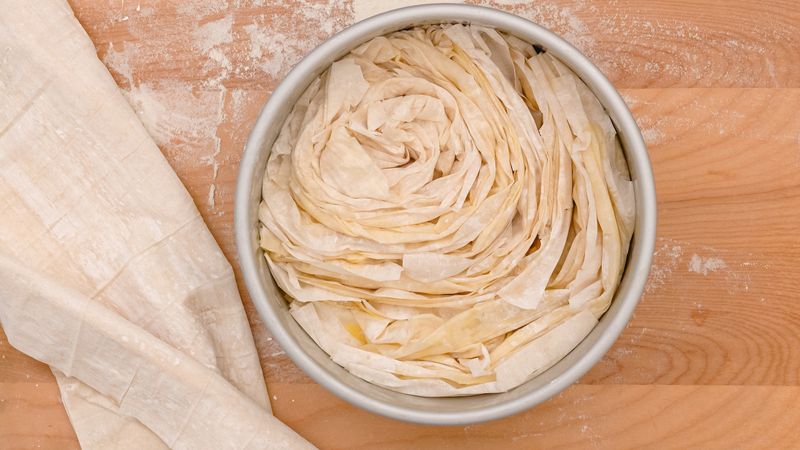
Phyllo pastry is delicate and dries out faster than you think, turning brittle and impossible to work with. Exposure to air for even a few minutes can ruin the texture.
To prevent this, always keep unused sheets under a damp kitchen towel while you work. If it’s already dried, you’ll need to start with fresh phyllo—sadly, there’s no revival trick.
2. The Butter Soaked The Bottom Layers
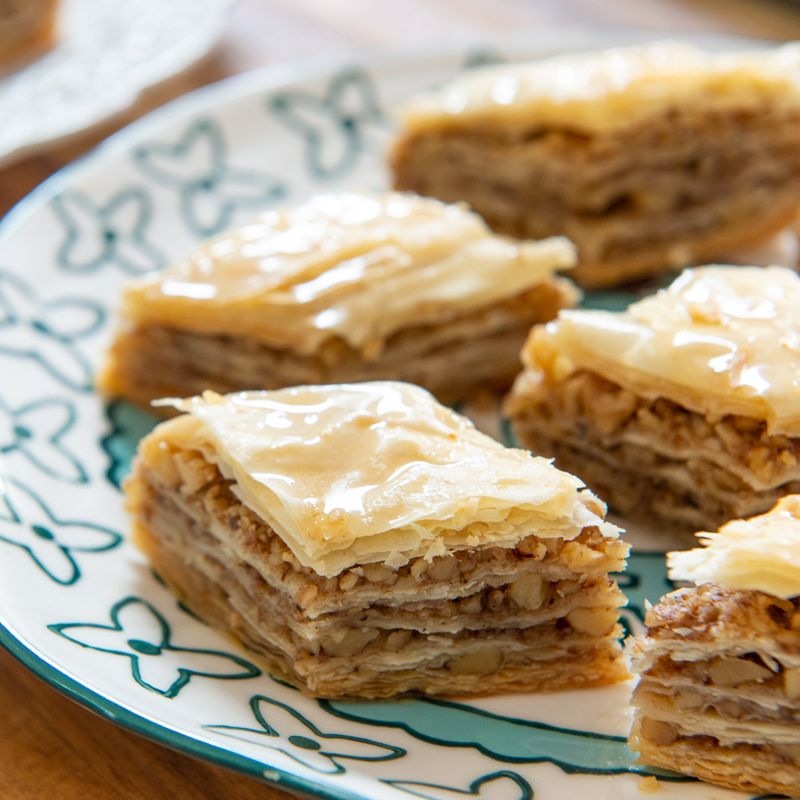
Pouring too much melted butter all at once causes it to pool at the bottom, making the base greasy and dense. Uneven distribution also leads to soggy corners.
Use a pastry brush to lightly dab butter onto each sheet. That extra step makes sure the layers stay crisp, golden, and perfectly balanced.
3. You Didn’t Chop The Nuts Evenly
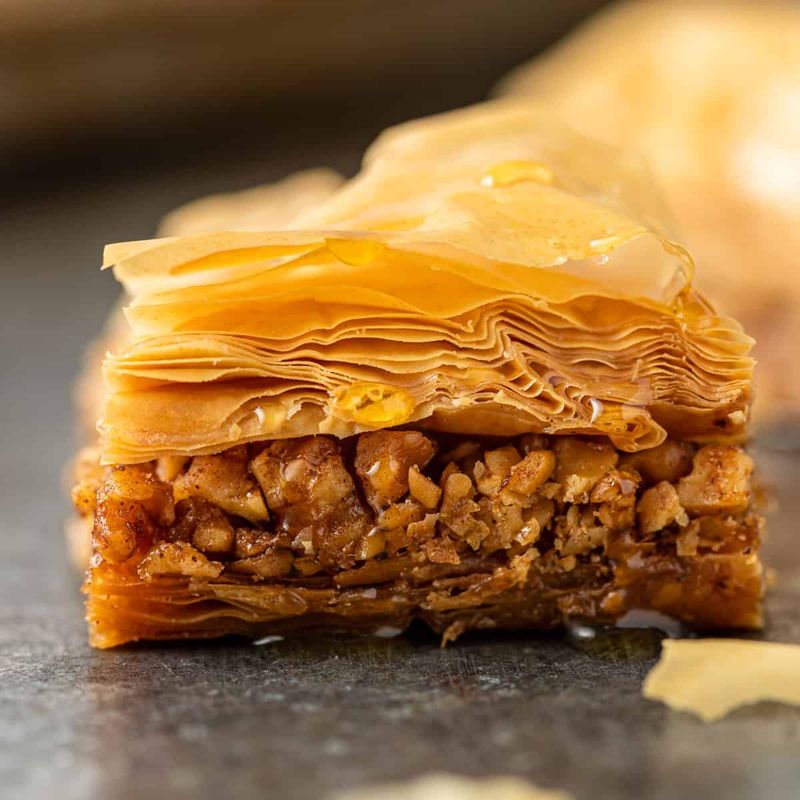
Large nut chunks tear the phyllo and cause gaps, while tiny bits turn dusty and compact. Texture gets lost in both extremes.
Use a food processor with quick pulses for uniform pieces, or chop by hand with care. The goal is crunchy, balanced bites that sit flat in their layers.
4. The Spices Were Overpowering

Overloading cinnamon or clove can mask the taste of the nuts and honey, leaving your baklava tasting more like potpourri.
Stick to a light touch—just enough to bring warmth without stealing the spotlight. Taste your nut mix before layering to catch any spice overload early.
5. Your Syrup Was Too Thin
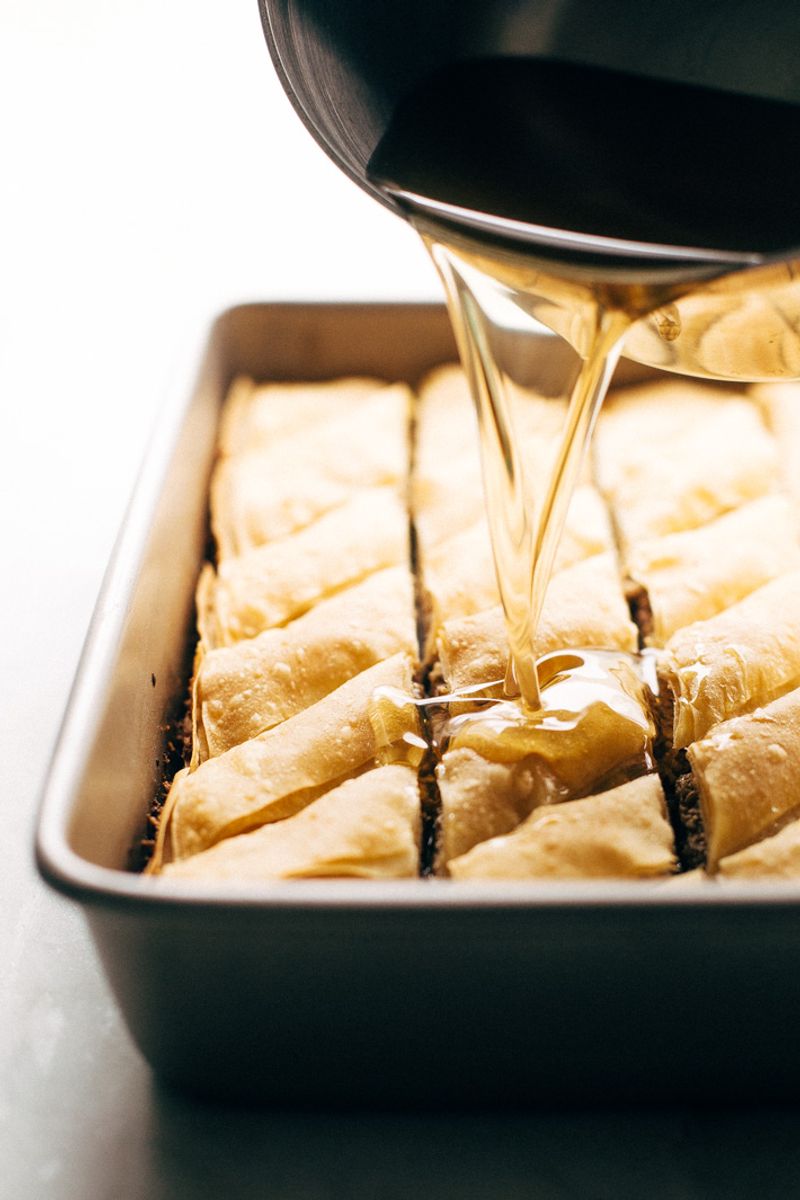
A watery syrup seeps through the pastry and leaves the baklava limp instead of crisp and sticky. It won’t give that satisfying chew.
Simmer your syrup longer so it thickens slightly and clings to a spoon. A squeeze of lemon juice also prevents it from crystallizing as it cools.
6. You Added The Syrup While The Baklava Was Cold
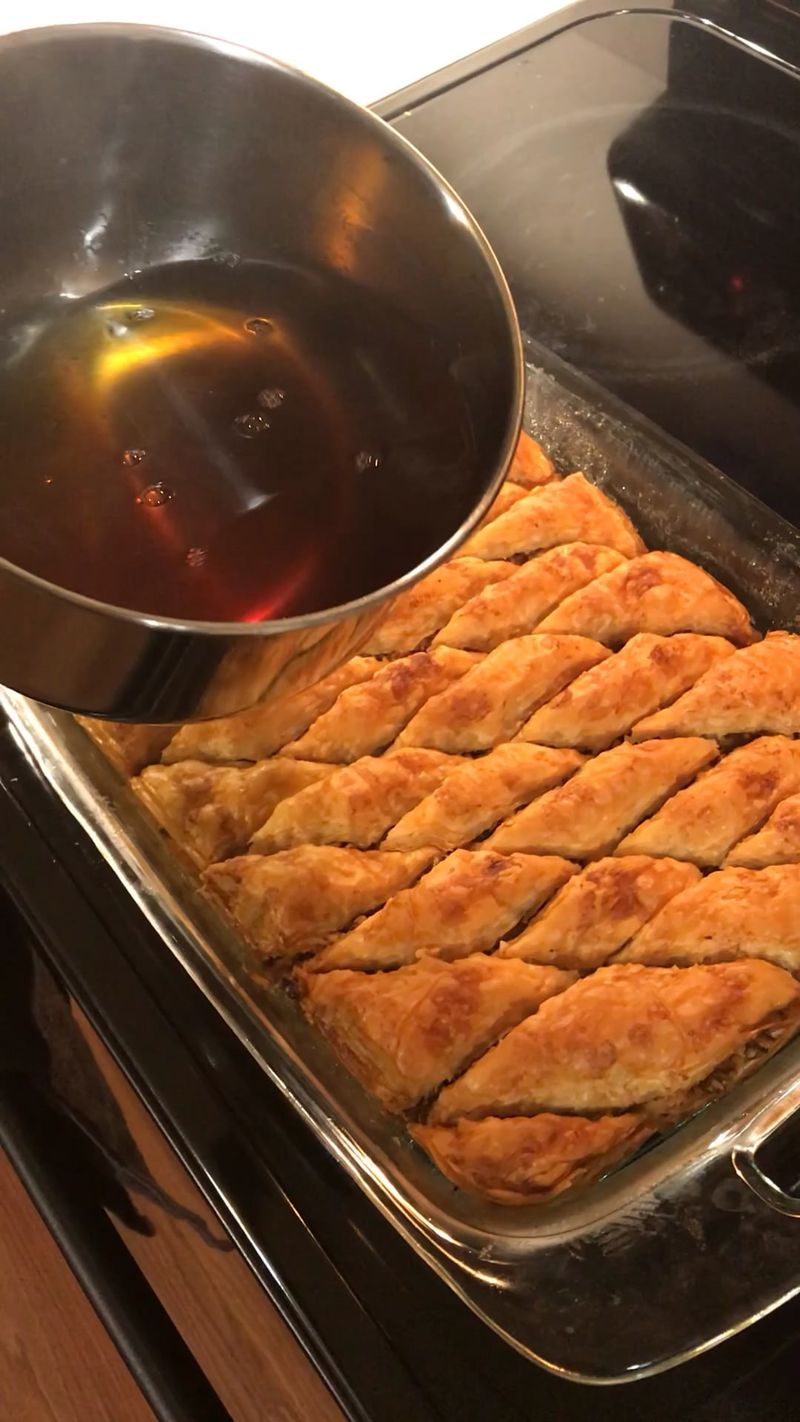
Cold pastry meets syrup and the result is a soggy, lifeless slab. The syrup doesn’t soak in—it just sits on top.
Let your baklava cool for 10–15 minutes, then add warm syrup. The gentle heat helps it absorb beautifully without turning mushy.
7. You Added The Syrup While The Baklava Was Hot
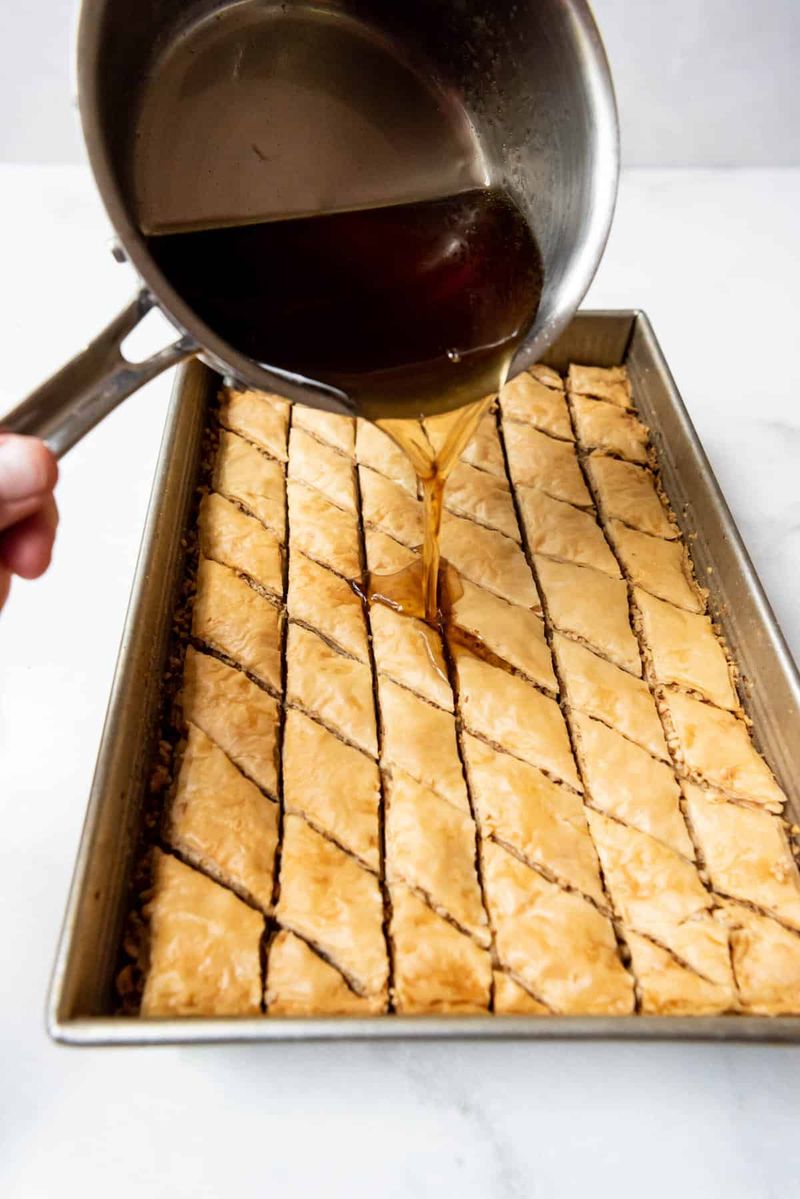
Piping-hot baklava and warm syrup can steam the phyllo and make it rubbery instead of crisp. You lose that flaky bite.
Always pair opposites: hot baklava with cool syrup or cool pastry with warm syrup. This trick keeps layers distinct and crunchy.
8. You Skipped Brushing Every Layer
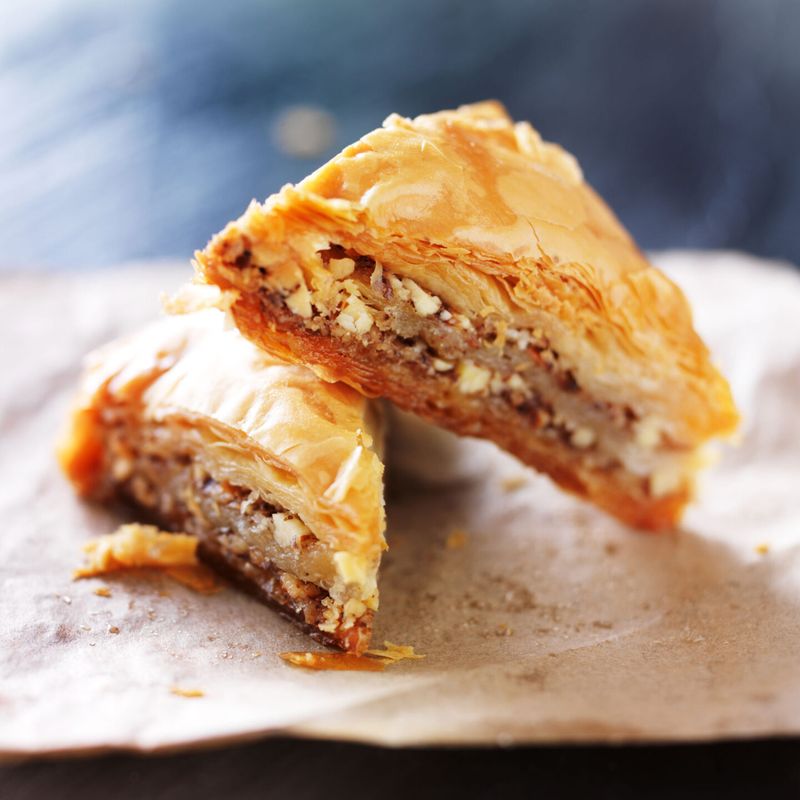
Skipping butter between phyllo sheets leads to dry, papery layers that never crisp. Instead of golden and flaky, you get dull and stiff.
Brush lightly but consistently. Each layer doesn’t need to be soaked—just a whisper of butter helps create that signature melt-in-your-mouth texture.
9. Your Cuts Were Uneven

Ever cut into baklava, only to find uneven pieces? Mark your cuts before baking to guide you. If cuts are already uneven, serve with charm and a smile! Future attempts can be improved with practice. Even cuts ensure everything bakes evenly, and everyone gets a fair share of that delicious treat. Remember, practice makes perfect!
10. The Edges Burned Before The Center Was Done
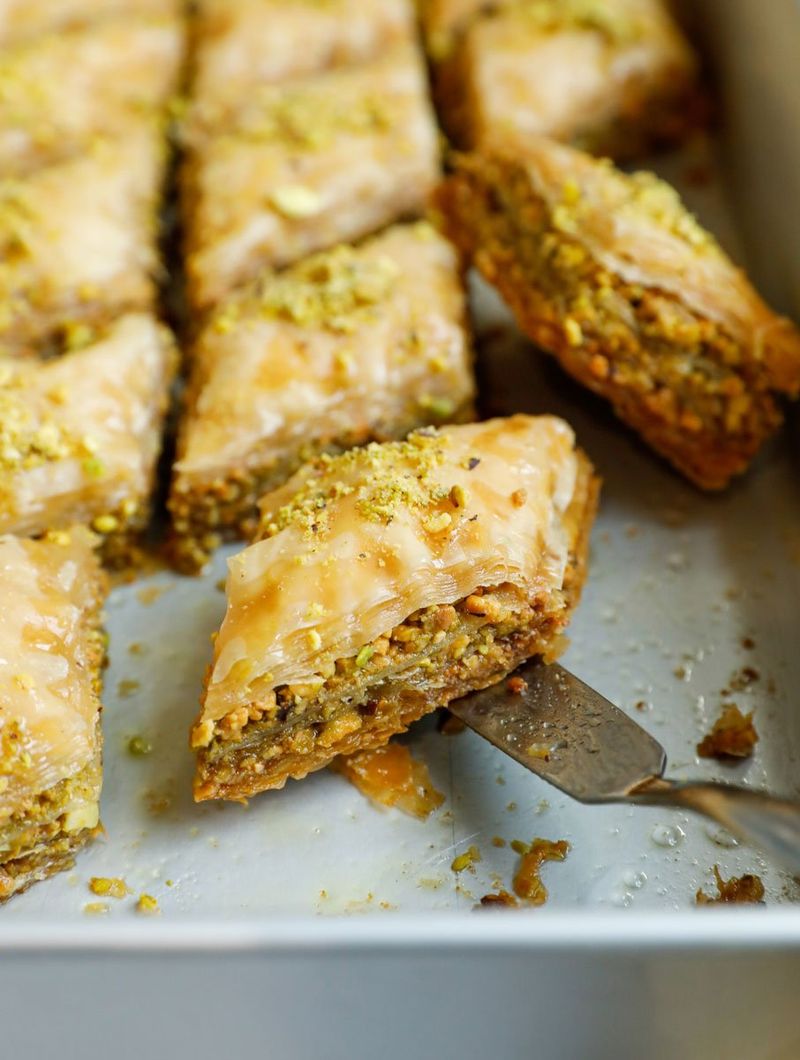
If your baklava’s edges burn before the center cooks, it’s likely an oven issue. Rotate the pan midway through baking. If it’s a persistent problem, reduce the oven temperature slightly. Covering with foil can prevent burning while the center bakes. This helps achieve an even, golden hue throughout, making every piece delectable.
11. You Used The Wrong Pan Size

Using a pan that’s too big or too small messes up your layering and can lead to underfilled or overcrowded pastry.
Stick with the pan size the recipe recommends. If you need to adjust, cut the phyllo and filling to match proportionally so nothing bakes out of balance.
12. The Layers Slid When Cutting
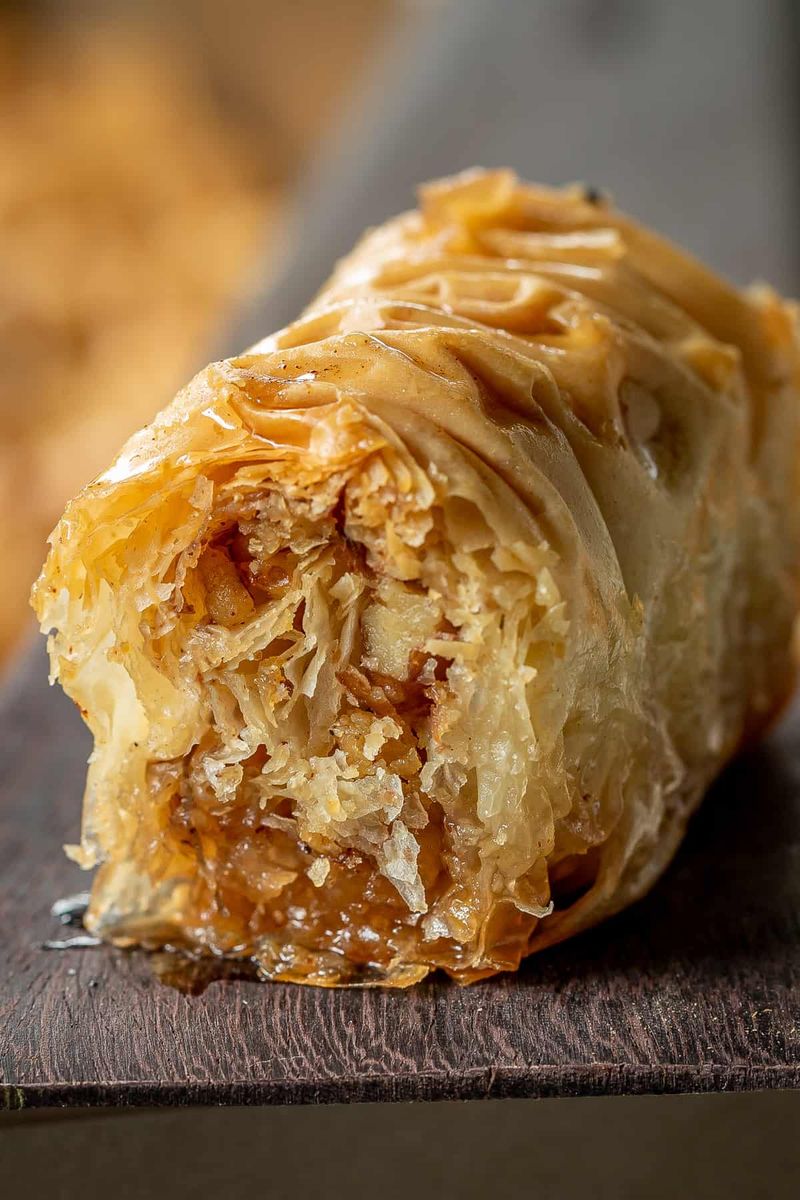
If the phyllo moves while slicing, layers shift and collapse, leaving jagged portions that bake unevenly. Presentation suffers too.
Use a thin, sharp knife and chill the assembled baklava briefly before cutting. Press down gently instead of sawing to keep it tidy.
13. You Used Too Much Honey

Overdoing honey in the syrup makes the baklava overly sticky and cloying. Instead of balance, you get a sugar overload.
Mix honey with sugar, water, and lemon juice to lighten the sweetness. Add just a touch of floral or citrus notes for depth.
14. You Didn’t Let It Rest Overnight

Cutting into baklava too soon stops the syrup from soaking in fully. Flavors stay flat and texture feels dry in parts.
Let it sit overnight, loosely covered at room temperature. This resting time allows every bite to develop that rich, harmonious chew.
15. You Stored It In The Fridge
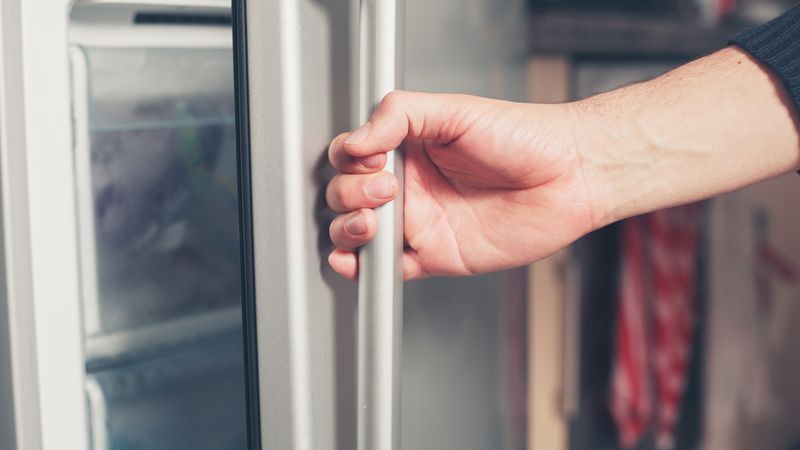
Cold temperatures harden the pastry and dull the flavors, leaving the baklava rubbery instead of crisp and aromatic.
Always store baklava in an airtight container at room temperature. If needed, warm it slightly in the oven—not the microwave—for best results.

